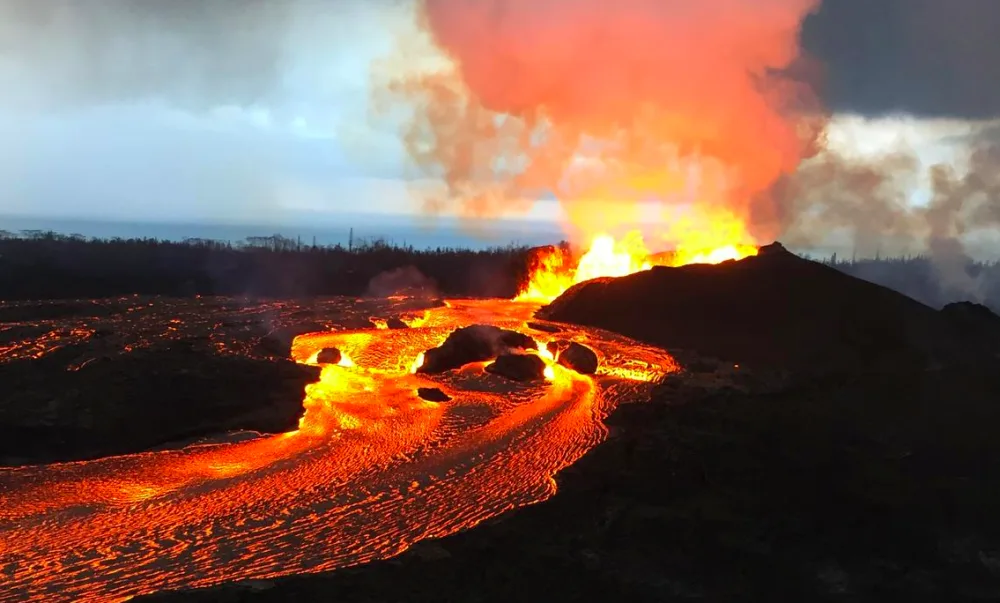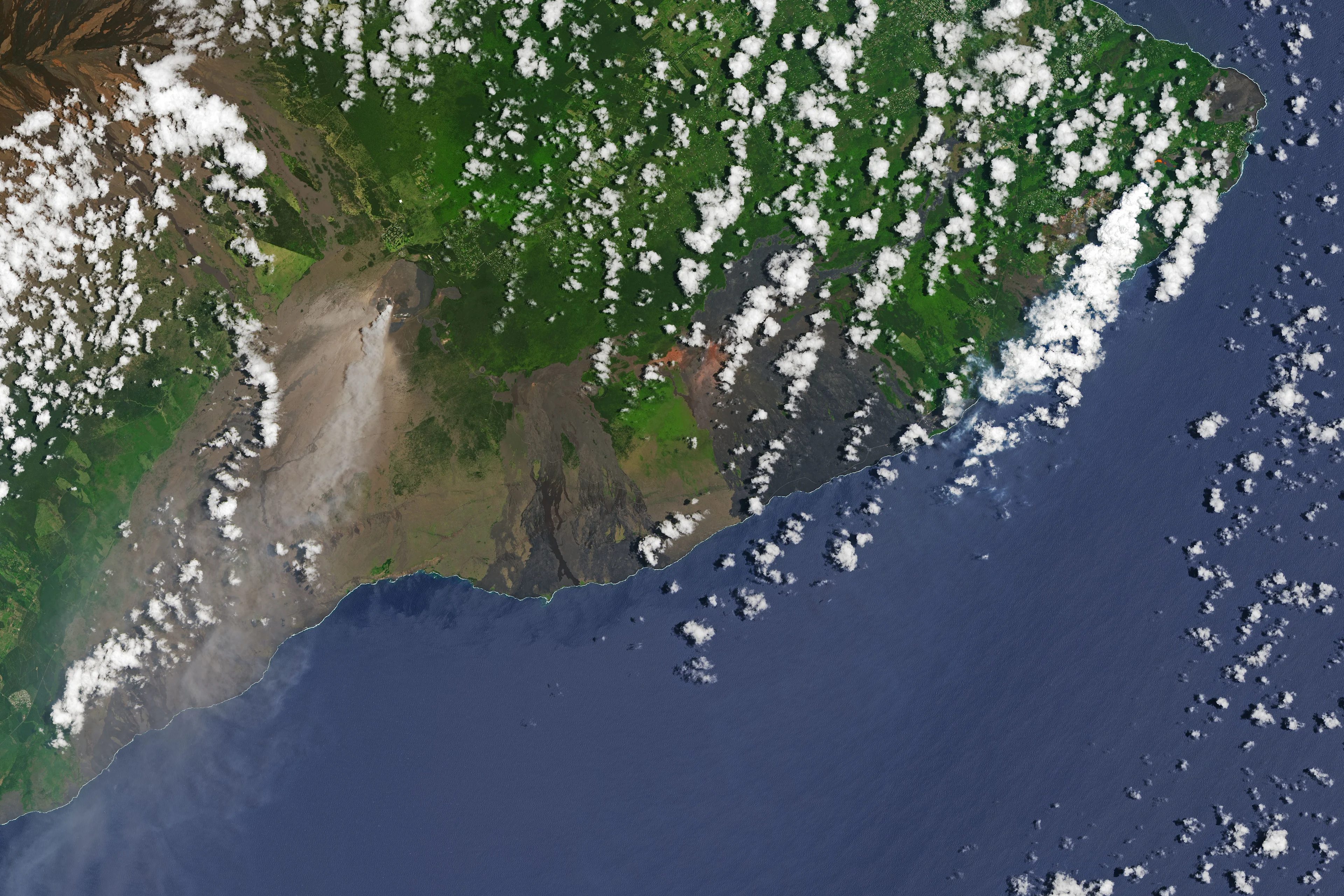
How heavy rainfall triggered the Kilauea volcano's 2018 eruption
That part of Hawaii received more than twice its usual average rainfall in the first three months of 2018, which researchers say hastened the eruption.
Volcanic eruptions are some of the strongest, most destructive forces of nature, but new research suggests that, despite their power, they can still be influenced by simple rainfall -- if there's enough of it over a long period of time.
That's the conclusion of a new NASA-funded study of Hawaii's Kilauea volcano, which erupted in May 2018 with effects lasting through to early September. The spectacular eruption featured 10-kilometre-high plumes of ash, and slow-moving lava flows that destroyed hundreds of homes and caused some US$800 million (CA$1.1 billion) in damages.
No one was killed, but 23 people were injured when a lava bomb belched up by the volcano struck a nearby tour boat.

Lava was spewed almost 50 metres into the air from some fissures according to NASA (Photo: USGS Hawaiian Volcano Observatory)
Using ground and satellite data, the researchers modelled the "fluid pressure" in the area, caused by rainwater gradually accumulating in the volcano's interior, and found it had been at its highest level in almost 50 years by early 2018.
That buildup coincided with a period of prolonged and heavy rainfall events: some 2250 mm of rain was recorded in that part of Hawaii in the first three months of 2018, more than half the 20-year average. Over time, the researchers say, it all added up.
“Under pressure from magma, wet rock breaks easier than dry rock inside the volcano. That, in turn, forges pathways for magma to travel to Earth’s surface," Falk Amelung, a geophysics professor at the University of Miami, said in a release from NASA.
Jamie Farquharson, a University of Miami post-doctoral student who was the paper's lead author, said the researchers also found similar eruptions were twice as likely to occur during the wetter parts of the year.

A plume of steam rises above the summit of Kilauea on May 14, 2018, in the left half of the photo. Image: Credits: NASA Earth Observatory images by Joshua Stevens, using Landsat data from the U.S. Geological Survey.
Farquharson says the process likely occurs at other volcanic sites, something for planners to keep in mind as climate change results in more frequent extreme rainfall events in some areas.
“As a result, we expect that rainfall-induced volcanic activity could become more common," he says.
The new findings were published in the journal Nature.
Kilauea's 2018 eruption was essentially the opening of a new fissure for the volcano, which erupted continuously in one form or another from 1983 to 2018.











